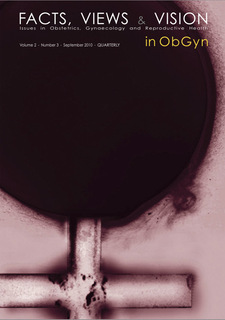Adhesion formation after laparoscopic surgery: what do we know about the role of the peritoneal environment?
laparoscopy, pneumoperitoneum, adhesion formation, adhesion prevention
Published online: Oct 05 2010
Abstract
In spite of the approaches that have been proposed to reduce postoperative peritoneal adhesions, they remain a major clinical problem because of the associated intestinal obstruction, chronic pelvic pain, female infertility and difficulties at the time of reoperation. The pathogenesis of the process have been focused almost exclusively on the local events induced by the surgical trauma, and the strategies for adhesion prevention thus focused on barriers to separate surgically denuded areas. The important role of the peritoneal cavity environment only recently became apparent and is not yet incorporated in adhesion reducing strategies. Recent data demonstrate that, in the presence of a direct surgical trauma, the entire peritoneal environment is quantitatively the most important factor in adhesion formation and hence adhesion prevention after both open and laparoscopic surgery. Indeed mesothelial hypoxia (CO2 pneumoperitoneum) or hyper- oxia (open surgery), desiccation and surgical manipulation have been identified as factors cumulatively enhancing adhesions. The clinical implication is especially relevant for laparoscopic surgery because the pneumoperitoneum, being a closed environment, can be easily conditioned. Although human studies are lacking, animal data indicate that peritoneal adhesions can be reduced by over 80% with a good surgical technique, with adequate pneumoperitoneum conditioning as adding 3-4% of oxygen to the CO2 pneumoperitoneum, prevention of desiccation and slight cooling. Adhesion prevention barriers remain additionally effective, although quantitatively less important. The relevance of all these strategies for adhesion prevention still have to be confirmed in humans, but since it seems that the peritoneal environment is quantitatively much more important than the surgical trauma, adhesion prevention research and strate- gies should be directed more to conditioning the peritoneal cavity than to the use of agents.



